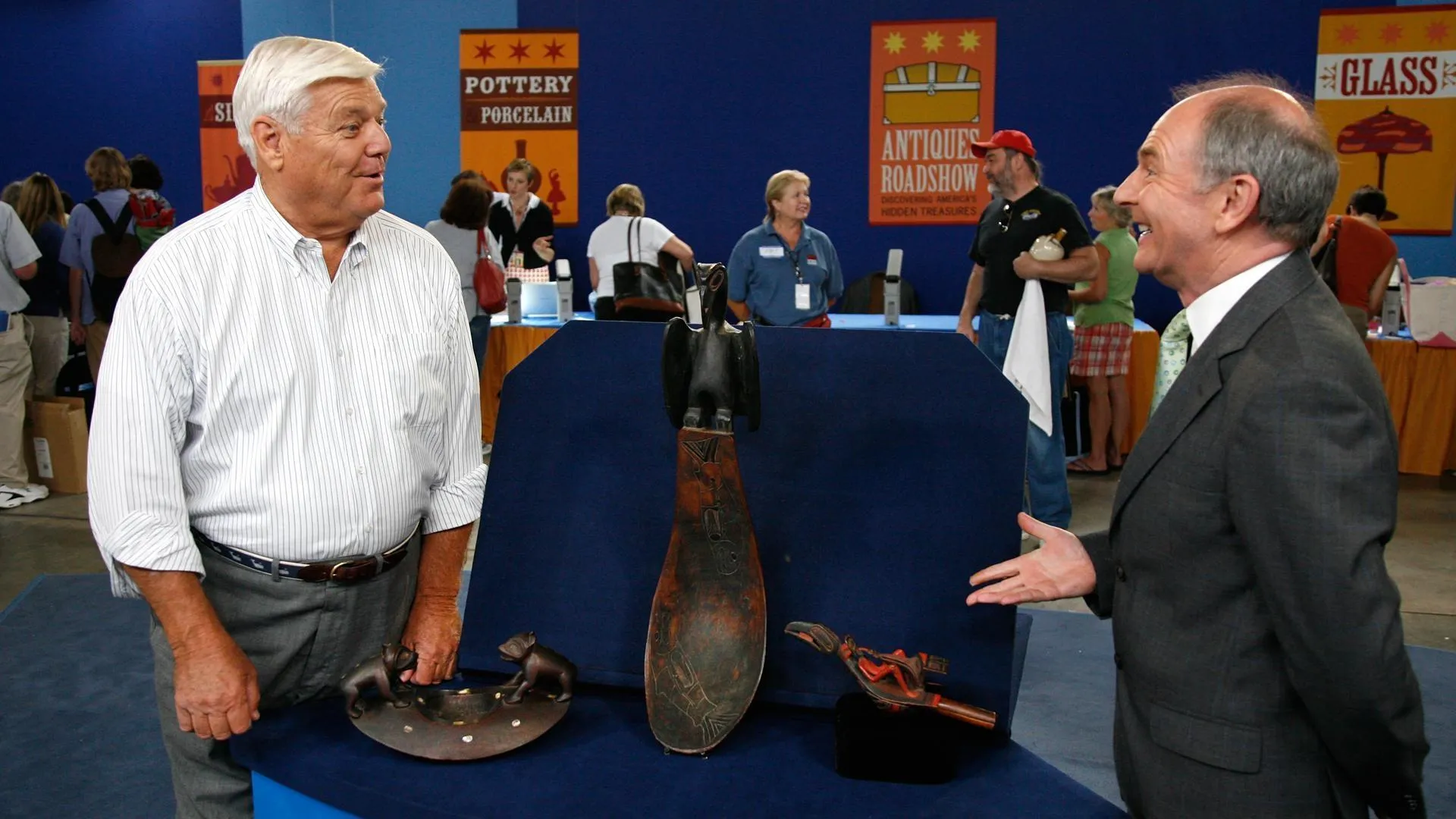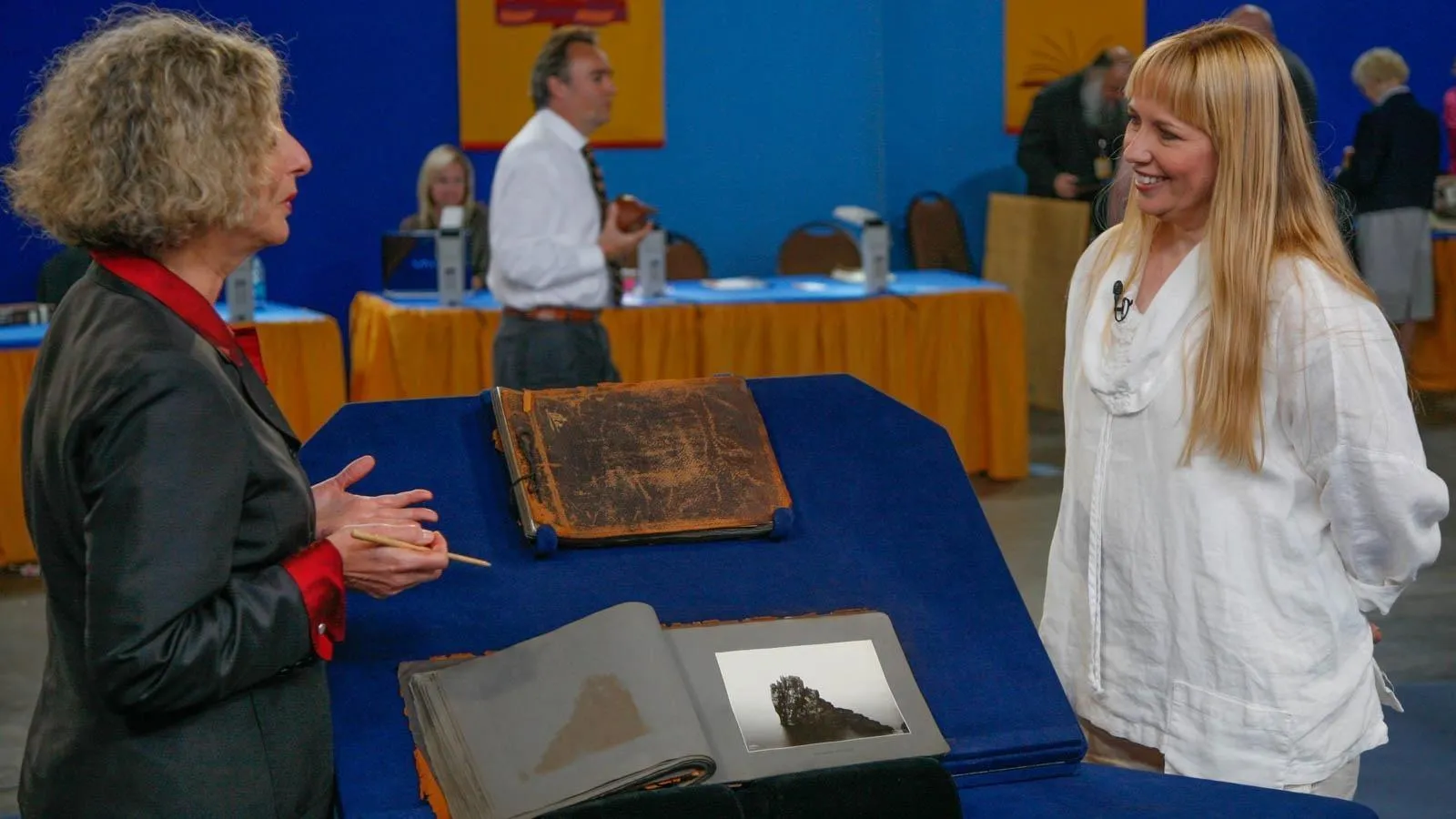GUEST: This was my grandfather's. He made it when he worked at Martin Guitar in Nazareth. He started to work there after he came back from World War I uh.
APPRAISER: So, about what year?
GUEST: About 1918, 1920 is approximately when this was made. He worked there for several years. I don't know exactly the length of time he worked there. He left Martin and then later on, he went back to Martin for a… a second time for several years in the uh '40s or '50s, but I'm not really sure.
APPRAISER: Well, this is an amazingly good uke. I knew immediately when you pulled it out of the box, or your case, that this was an employee model. You had Grade 1, Style 1, Style 2, Style 3, Style 5. The Style 3 uke-- and this has the same ornamentation as the Style 3-- had celluloid bindings like this, seven-ply bindings on the top, three-ply on the back, this celluloid ornament. And you've got this, also celluloid. Actually they called it "grained ivoroid," because it has... it looks like ivory, sort of.
GUEST: Mm-hmm.
APPRAISER: And it has this little three-piece nut. It has the lines down the center-- five-piece line. It has these pearl ornaments. But it's missing something. It wasn't made of mahogany or koa wood. So in 1918, they started making the Style 3 out of mahogany, and then by about 1920, started making the koa one. But I looked at this, and it was the spruce top with rosewood back and sides. I've never seen one in my life, so I knew it had to be an employee model. It was a one-off. Martin employees were allowed to make personalized models, usually one. They might have made several over a lifetime of working there. And the period corresponds to when you're thinking he worked there.
GUEST: Mm-hmm.
APPRAISER: Just about 1918 to '23. Because that's when this model had this interesting... See the little two diamonds there?
GUEST: Mm-hmm.
APPRAISER: But they're joined in the center. After 1923 or '24, I think, they split ‘em up. And obviously he's making uh a standard Grade 3 uke, but he is doing it his own way.
GUEST: Yes.
APPRAISER: So ebony bridge, ebony fingerboard, rosewood friction pegs... or actually, I think these are ebony friction pegs. This inlay in the back was an inlay that was used later on in the Style 28 guitars. I'm surprised to see it on this instrument. And it's just impeccable. It’s, I think it's the nicest period Martin uke I've ever seen. And visually, visually extremely appealing. And the condition is like new, because it's been in that wonderful felt bag all these years, pretty much unplayed, it looks like.
GUEST: Yes.
APPRAISER: Did you ever play it?
GUEST: I played with it a little bit, but not, not well enough to uh brag about.
APPRAISER: A Grade 3 uke in mahogany sells in the $3,000 range. This has gotta sell for more. A retail value would be $4,000, perhaps a bit more.
GUEST: That's great.
APPRAISER: But it's, it's incredible. I've never seen a Brazilian rosewood spruce-top uke ever from the Martin Company-- he made what looks like a mini guitar.
GUEST: Yes.












